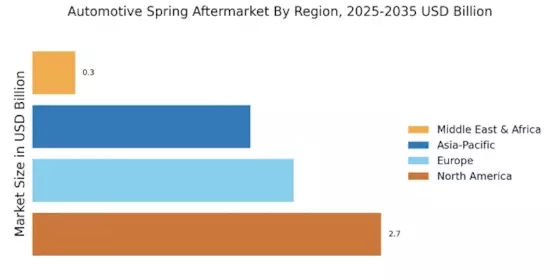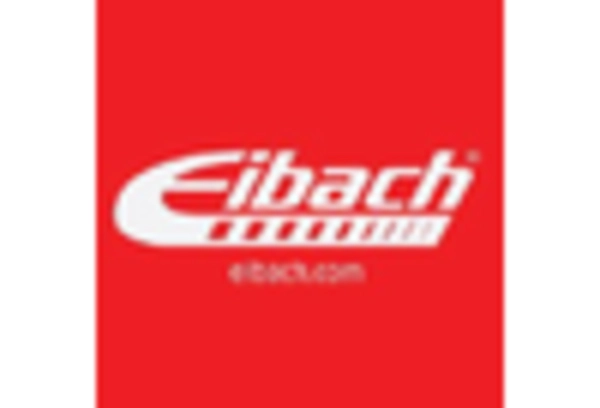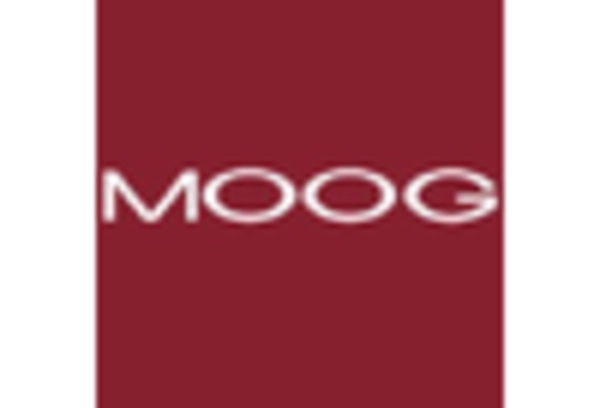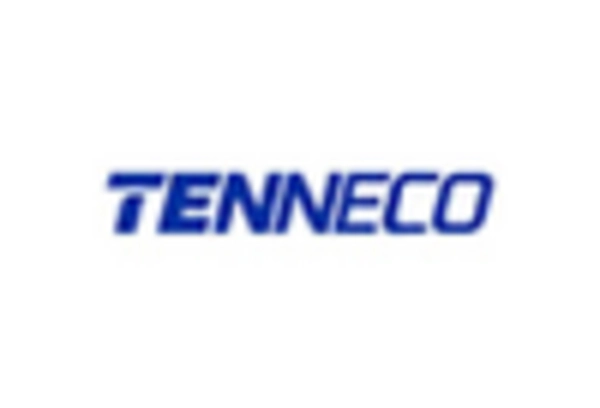E-commerce Growth
The rise of e-commerce has transformed the way consumers purchase automotive parts, including springs, thereby impacting the Automotive Spring Aftermarket. Online platforms provide consumers with easy access to a wide range of products, often at competitive prices. Recent statistics show that online sales of automotive parts have increased significantly, with e-commerce accounting for a substantial portion of total aftermarket sales. This shift towards online shopping not only enhances convenience for consumers but also allows smaller retailers to reach a broader audience. Consequently, the Automotive Spring Aftermarket Industry Market is likely to benefit from this trend as more consumers opt for online purchases.
Increasing Vehicle Age
The average age of vehicles on the road continues to rise, which appears to be a significant driver for the Automotive Spring Aftermarket. As vehicles age, components such as springs are more likely to wear out, necessitating replacement. Data indicates that the average age of light vehicles has reached approximately 12 years, leading to a growing demand for aftermarket parts. This trend suggests that consumers are more inclined to invest in maintaining older vehicles rather than purchasing new ones, thereby boosting the Automotive Spring Aftermarket Industry Market. Furthermore, the increasing age of vehicles correlates with a heightened awareness of vehicle maintenance, which may further stimulate demand for replacement springs.
Rising Performance Expectations
Consumers today exhibit heightened expectations regarding vehicle performance, which significantly influences the Automotive Spring Aftermarket. As drivers seek improved handling, comfort, and safety, the demand for high-performance springs has surged. This trend is particularly evident in the growing popularity of aftermarket modifications, where enthusiasts invest in upgraded suspension systems. Market data suggests that the performance parts segment is expanding, with a notable increase in sales of performance springs. This shift indicates that consumers are willing to spend on aftermarket solutions that enhance their driving experience, thereby propelling the Automotive Spring Aftermarket Industry Market forward.
Regulatory Compliance and Safety Standards
Increasing regulatory compliance and safety standards are driving the Automotive Spring Aftermarket as manufacturers and consumers alike prioritize safety. Stricter regulations regarding vehicle safety and emissions have led to a greater emphasis on maintaining and upgrading vehicle components, including springs. Data indicates that vehicles equipped with high-quality aftermarket springs are often perceived as safer and more reliable. This trend suggests that consumers are more likely to invest in aftermarket solutions that meet or exceed safety standards, thereby enhancing the overall appeal of the Automotive Spring Aftermarket Industry Market. As regulations continue to evolve, the demand for compliant aftermarket parts is expected to grow.
Technological Innovations in Manufacturing
Technological advancements in manufacturing processes are reshaping the Automotive Spring Aftermarket. Innovations such as advanced materials and precision engineering techniques have led to the production of springs that offer improved performance and durability. These advancements not only enhance the quality of aftermarket springs but also reduce production costs, making them more accessible to consumers. Market analysis indicates that the introduction of new manufacturing technologies is likely to drive competition within the Automotive Spring Aftermarket Industry Market, as companies strive to offer superior products. As consumers become more aware of these innovations, the demand for technologically advanced springs is expected to rise.


















Leave a Comment